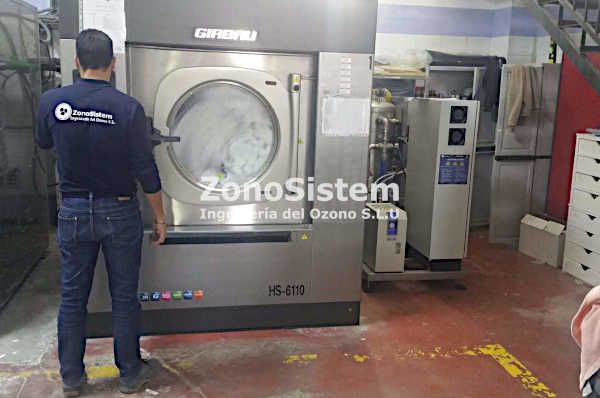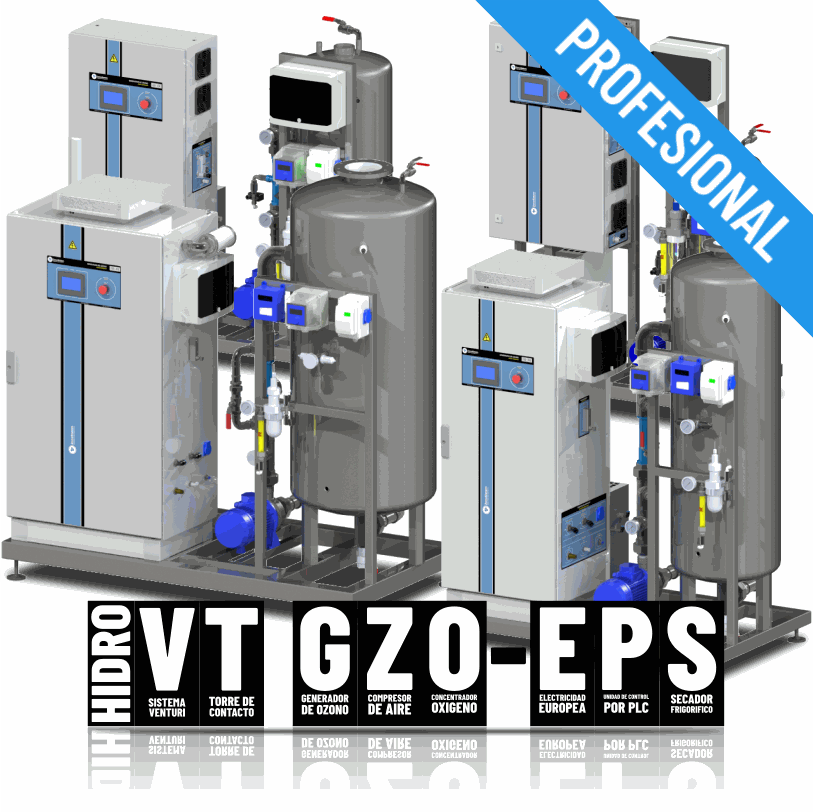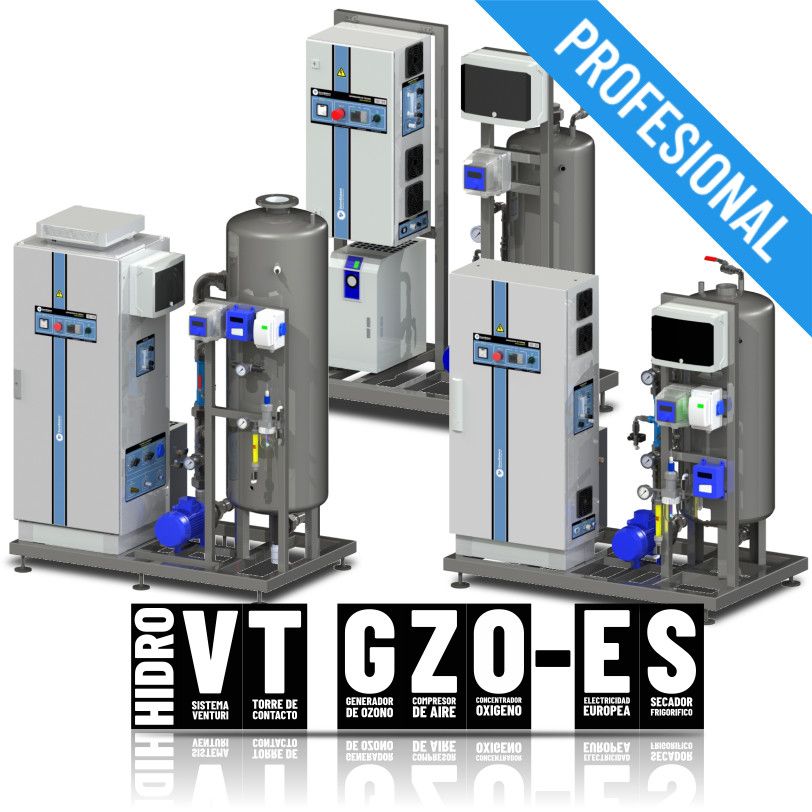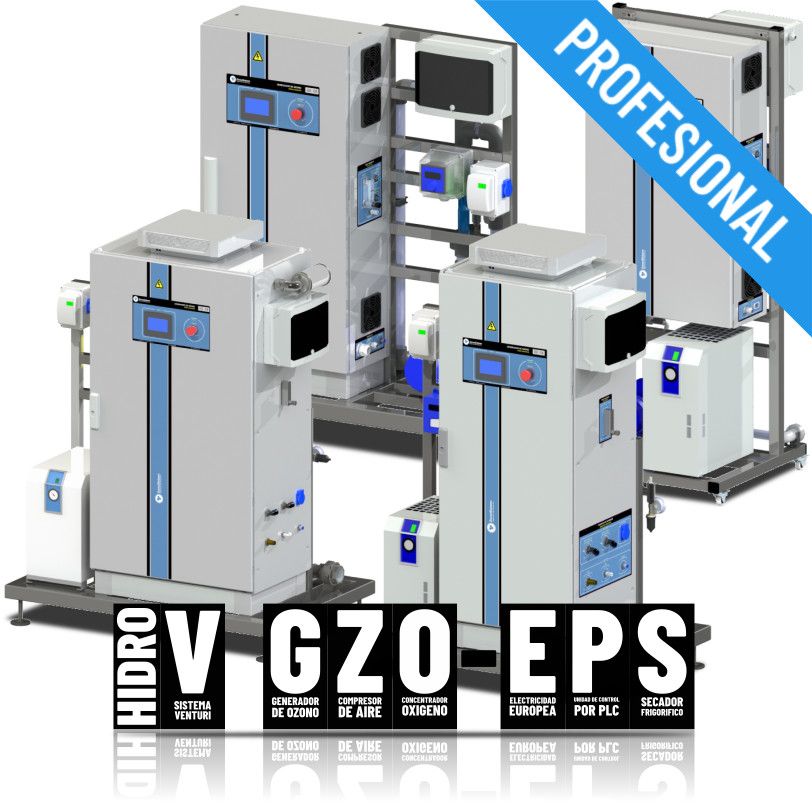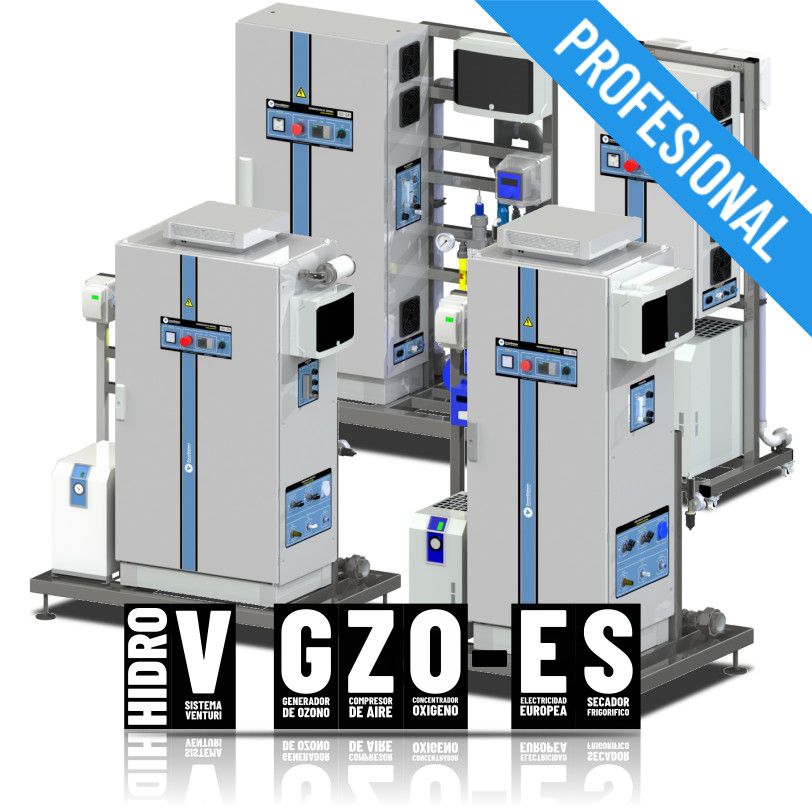Ozone in laundry
To get the most out of

Use of ozone in industrial laundry
Industrial laundry is a growing business model in today's society due to the lifestyle we lead. Its main operating costs are energy consumption, cold and hot water consumption, detergents, and other products. Additionally, they are generally required to pay a discharge fee for the amount and type of wastewater generated, usually in urban areas. Finding sustainable alternatives that allow entrepreneurs to make their businesses more profitable while reducing environmental impact and related costs has become a priority in recent years.
Ozone is a powerful oxidant that, when diluted in washing water, provides
significant benefits for both the business owner and the environment.
Ozone enhances the action of detergents, thereby reducing their consumption, but it also
reduces washing times and the number of rinses, decreasing water consumption
and the amount of wastewater generated per kilogram of laundry.
In many cases, it also allows
the complete elimination of hot water, significantly reducing energy costs.
All these advantages ultimately allow business owners to save money per kilogram of laundry,
increase the amount of laundry washed per day, reduce wastewater generation, and decrease
pollution levels per kilogram of washed laundry, thus optimizing the process and
making their laundry service more profitable and sustainable.
Make your laundry more profitable and ecological
Ozone reduces the consumption of detergents, hot and cold water and energy
Ozone is generated on-site, it does not need to store or transport chemicals
Ozone does not leave residues, it is respectful with the environment
The system is automated, you do not need manpower to apply it
Why use ozone in your industrial laundry?
Do you want to reduce the consumption of detergents?
Do you want to reduce washing times?
Do you want to consume less hot water?
Do you want to pollute the environment less?
Do you want to improve the discharge water?
Do you want to make your laundry profitable?
Do you have crystallization problems in nursing home clothes?

Advantages of using ozone in your industrial laundry
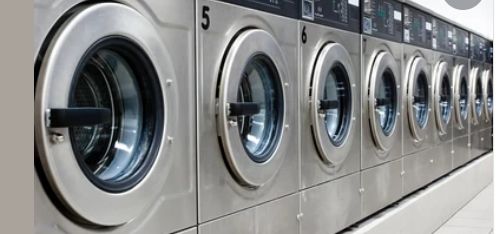
Save on detergents
Ozone is a powerful oxidant, and by dissolving it in water, it enhances the action of your laundry detergents. That is, you will need less detergent to achieve the same or better results. Depending on the type of garment to be washed, you can even reach a total reduction of the detergent.

Save water and energy
The oxidation potential of ozone allows you to reduce washing times, the number of rinses, and the use of hot water in your laundry. This causes that for each kilo of clothes to be washed, you will consume less water and less energy.

Reduce washing times
If you use ozone in your washing machine, you will be able to reduce washing times and the number of rinses thanks to the powerful oxidation action of ozone, which will allow you to carry out more washes per day, and increase the performance of your industrial laundry.

Whiter and softer
Ozone is a powerful bleach, thanks to its powerful oxidizing capacity, which allows for whiter garments with less detergent. On the other hand, ozone provides a peculiar softness to garments and prevents the crystallization of detergents, which do so much damage in nursing homes and people with sensitive skin.

More profitable
If you save detergents, water, time and energy for each kilo of laundry, you are reducing your operating costs, and if you also manage to do more washes per day, you will ultimately achieve a considerable increase in the profitability of your business.

More ecological
By installing an ozone system in your laundry, you will considerably reduce the discharge of chemicals into the sewage system, and you will reduce water and energy consumption, reducing the environmental impact of your laundry and protecting the environment.
What type of ozone generator do I need?
Below we show you the ranges available to inject ozone in your laundry.
1. What is the difference between the ranges?
The 4 ranges include the ozone generator, with compressor and the oxygen concentrator. The first difference is the HIDRO VT ranges, it is used to inject ozone directly into the water pipe, that is, directly into the flow that supplies water to the washing machines. To achieve this, they include a pump and a venturi to inject the ozone gas into the pipe and a contact tower to homogenize the mixture. The HIDRO V ranges, on the other hand, are used to inject ozone into a buffer water tank through recirculation with a pump and venturi.
The second difference is in the type of control. The -EPS have an automatic power control controlled by a PLC and allow washing always with the same amount of ozone dissolved in the water. The -ES on the other hand, have a manual power control and introduce a fixed and constant amount of ozone, which can cause some washes to go with more or less ozone than others depending on the water demands.
2. What range do you recommend?
It depends on how you have your hydraulic system. If you have a buffer tank from which you supply water to the washing machines, use a HIDRO V. If you do not have a buffer tank, install a HIDRO VT on the main line that supplies water to all the washing machines.
Regarding the control, obviously an -EPS is better, which will allow you an automatic control, however if you want to save some money, you can use the -ES and assume that some washes will go with more ozone than others.
3. How much ozone do I need?
If it is a HIDRO V, for recirculation in the buffer tank you will have to apply 1ppm for each cubic meter of incoming water. In other words, if you fill at 20m3/h, you will have to have at least a 20gO3/h unit. If it is a HIDRO VT, you must calculate 1 ppm for the maximum flow of the pipe. If your maximum flow rate is 20m3/h, you will need a 20gO3/h ozone generator.
Examples of Ozone in laundries
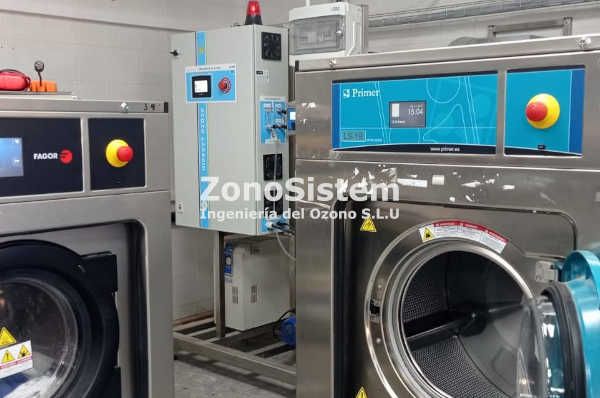
Ozone for Laundry. Extremadura, Spain.
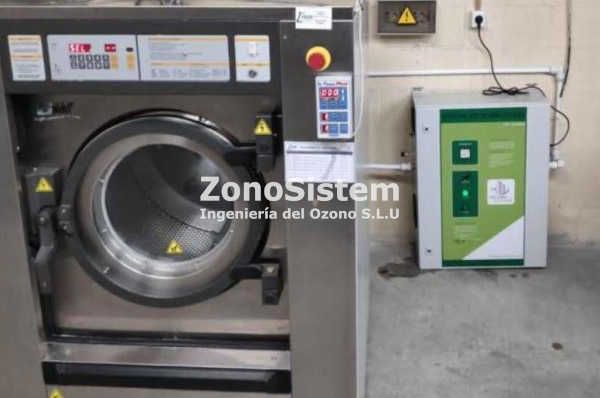
Ozone for Laundry. Granada, Spain
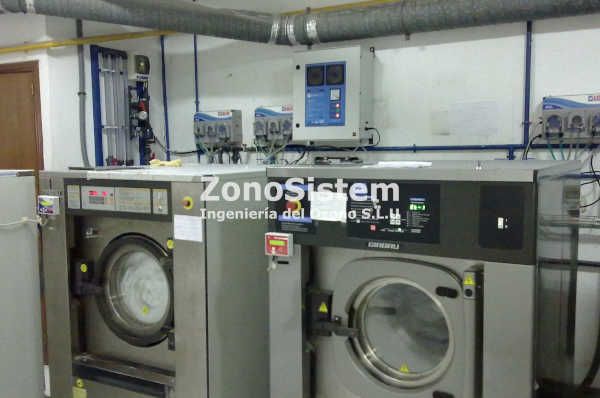
Ozone for Laundry. Extremadura, Spain.
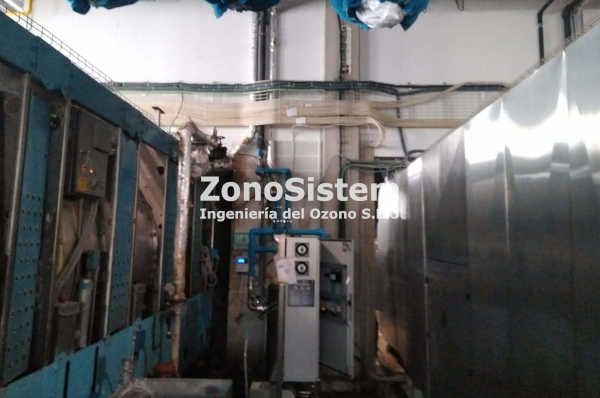
Ozone for Laundry. Granada, Spain
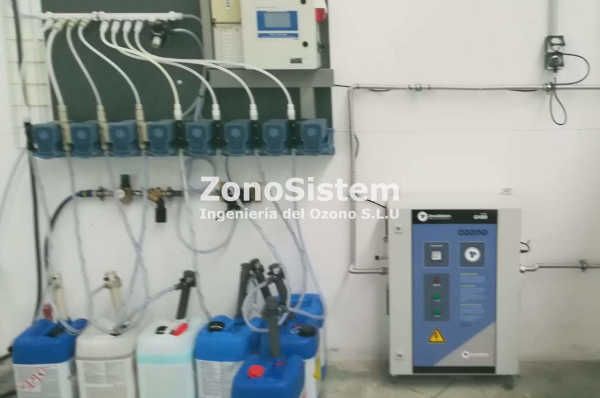
Ozone for Laundry. Extremadura, Spain.
